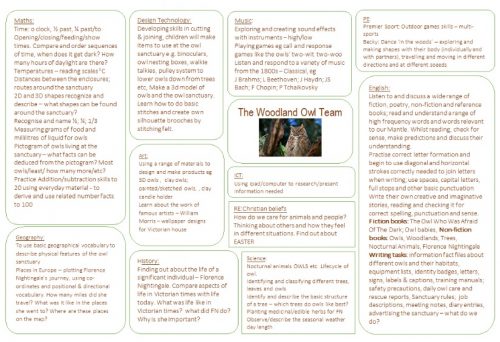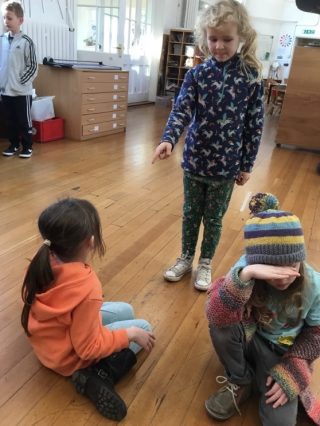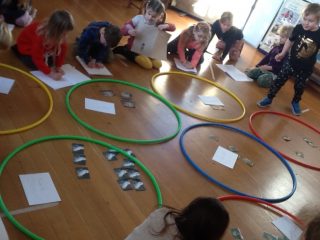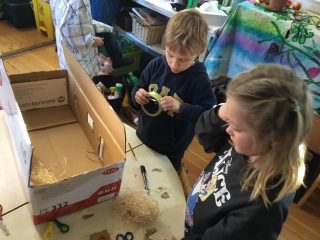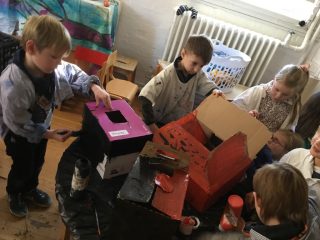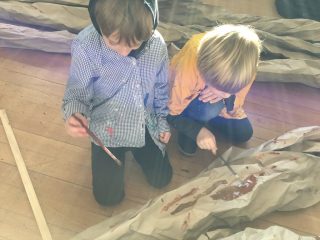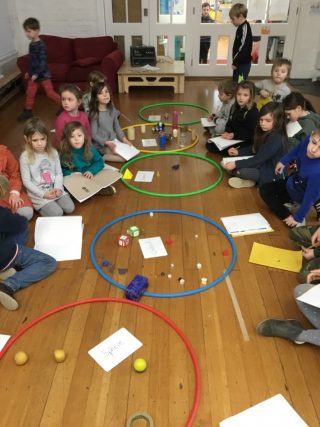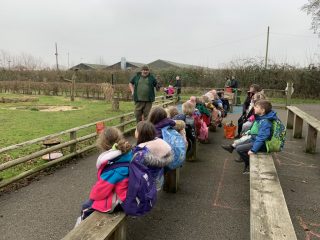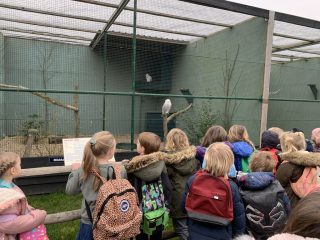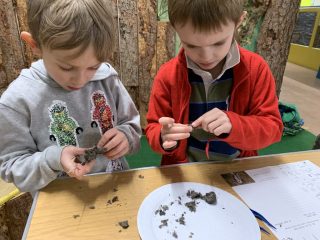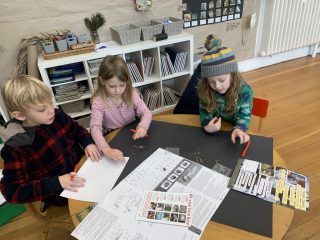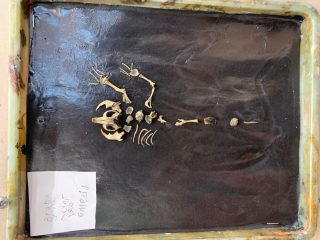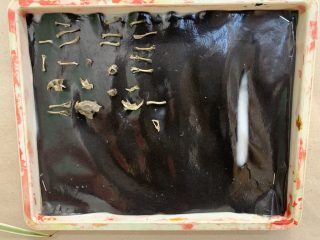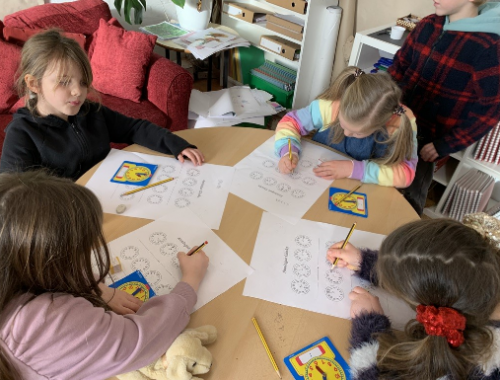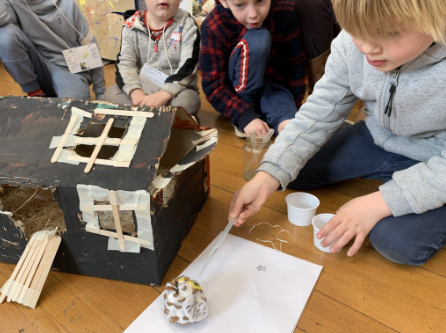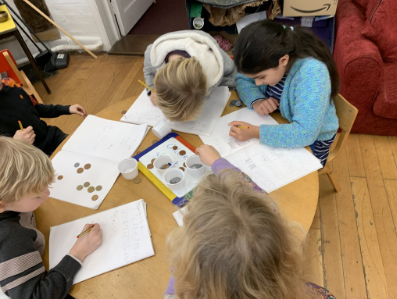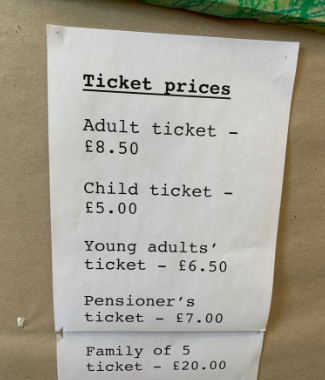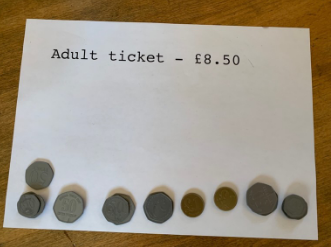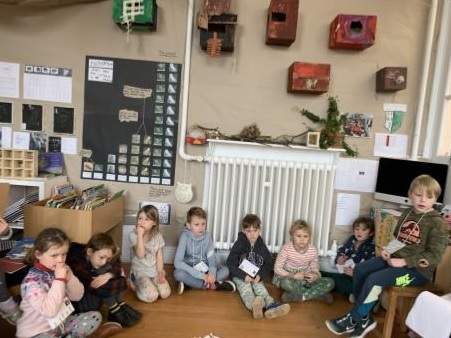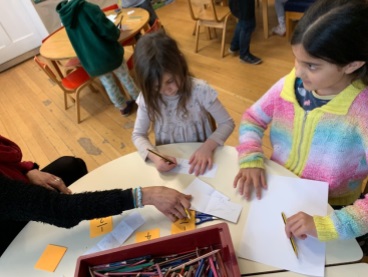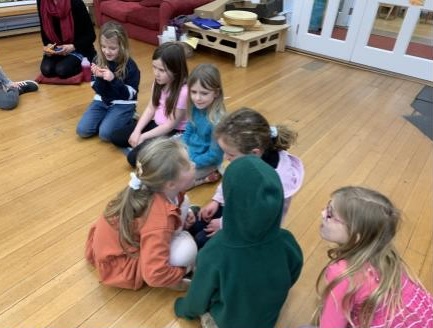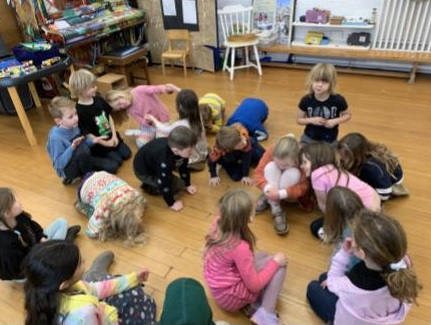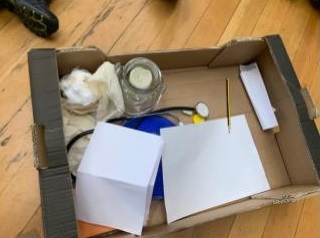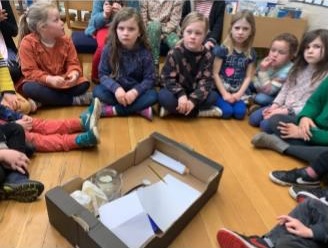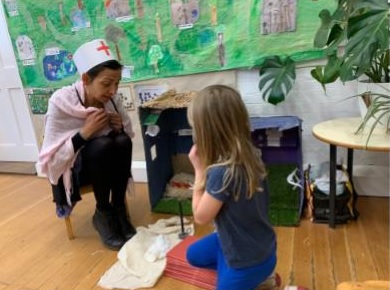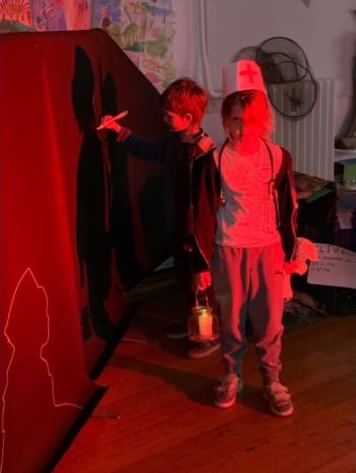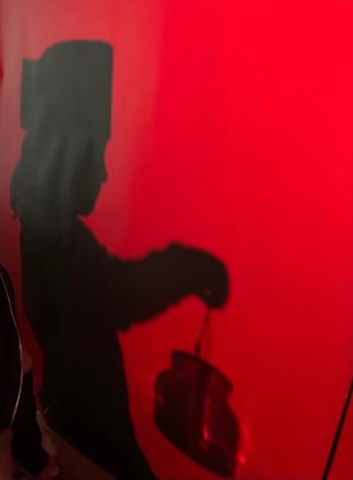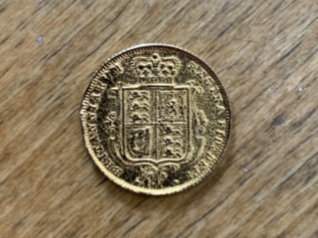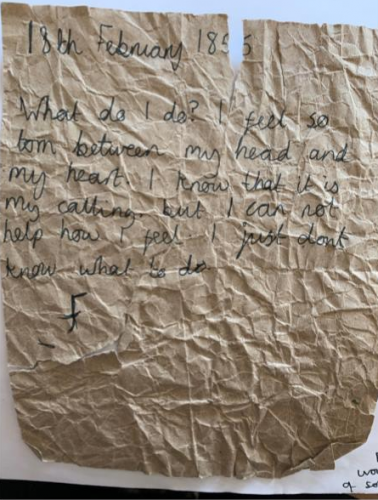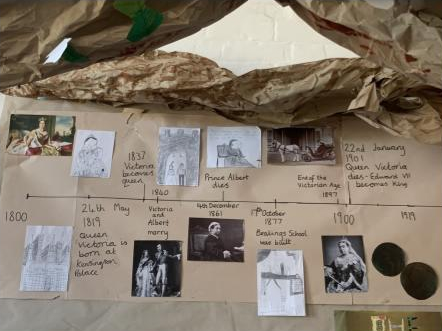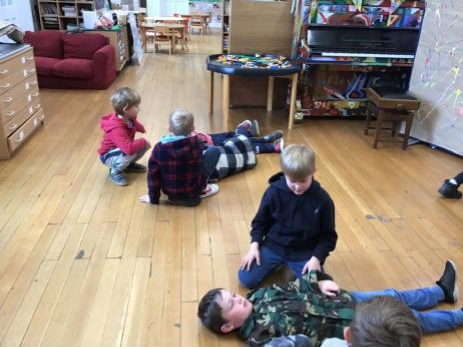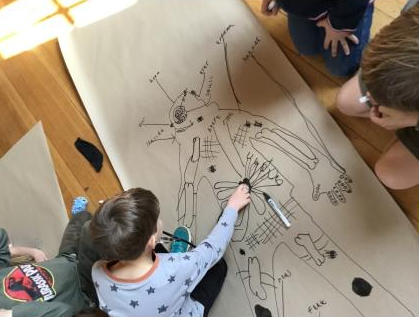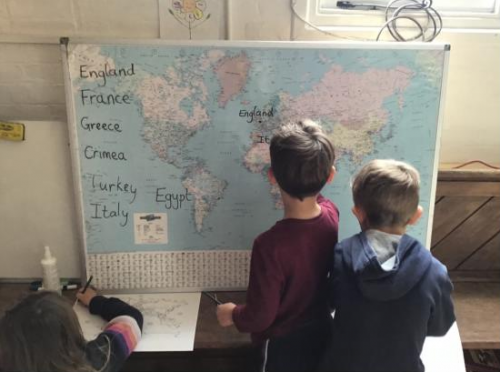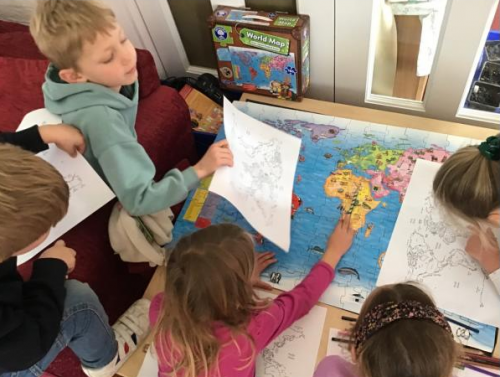W/c 5th January 2022
We received a letter from Natalie James, a local resident who was concerned about a baby owl that had fallen out of their nest from a tree in her garden. Being the best owl sanctuary in the area, we needed to step in and help. Our first step was to have a company meeting and discuss how we could help.
We confirmed that we were all invested in helping save this owlet, and started to think about our company. We created our own ID badges, detailing our jobs in the company and what we do. Jobs include vets, enclosure designers’ builders, gardeners, cleaners, activity planners and owl experts. We created tools and equipment that we need depending on these jobs.
We threw around ideas for the name of our company, and eventually decided by vote on the name ‘The Woodland Owl Team’.
Thinking further about our sanctuary, we looked at different types of owls and where our rescue efforts have been before.
The owls currently at our sanctuary include one short-eared owl, one screech owl, two long-eared owls, three eagle owls, four little owls, four barn owls, eleven tawny owls and eleven snowy owls. We put these different amounts into a pictogram, where we compared how many more/how many less; the most and least amount and the differences between these.
W/c 17th January 2022
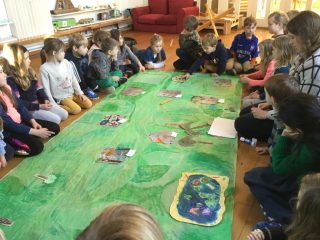 Having established our company and what owls we currently look after; it was time to create a map of our sanctuary. When talking about this, we thought about different 2d shapes that we could use for each sanctuary on the map. Could some of the enclosures be square of rectangle? Some might be triangular or perhaps pentagonal. We investigated shapes and the difference between 2D and 3D shapes, listing their properties and what shapes might work well for the enclosures. In total we needed eight different enclosures within the sanctuary, so we were certainly busy! Wanting to make the enclosures feel as homely and comfortable as possible, we researched and classified trees where owls usually live, and found out what habitats work well for owls.
Having established our company and what owls we currently look after; it was time to create a map of our sanctuary. When talking about this, we thought about different 2d shapes that we could use for each sanctuary on the map. Could some of the enclosures be square of rectangle? Some might be triangular or perhaps pentagonal. We investigated shapes and the difference between 2D and 3D shapes, listing their properties and what shapes might work well for the enclosures. In total we needed eight different enclosures within the sanctuary, so we were certainly busy! Wanting to make the enclosures feel as homely and comfortable as possible, we researched and classified trees where owls usually live, and found out what habitats work well for owls.
With our sanctuary set up and in full swing, we wrote our own replies to Natalie James, including questions that we needed answers to. What type of owl is this? What does it look like? Does it seem scared? We offered up our expertise in how she could best look after it in the time before our rescue.
We also built owl boxes to put up in our sanctuary – all different, but all cosy and very suitable for any future owls that we might look after!
W/c 24th January 2022
Further development have been underway at the Woodland Owl Team! We have added more trees to our sanctuary and finished our owl boxes to fix up.
Further 3D shape investigations ensued so that we could ensure the best possible shapes and sized for the enclosures!
On Tuesday, we were lucky enough to visit the Suffolk Owl Sanctuary, and had the most wonderful day! We were taken on a guided walk around the sanctuary, met the meerkat residents, learnt about owls from different parts of the world and their habitats, and, possibly the most fascinating part, we dissected owl pellets. An owl eats its prey whole, but it cannot digest the animals fur and bones. Instead, the owl will cough these parts back up through its mouth as a pellet. We dissected them and found a range of different bones from different animals, and matched these up to the pictures of each animals skeleton.
Back at school, we took these pellets to our company headquarters and investigated these further. We matched up the types of bones and what animals these could be on, presented them in our sanctuary and created a key matching up the names of each bone.
We wrote out thank you letters to Suffolk Owl Sanctuary and told them what a great day we all had. As well as this, we thought about how the owlet must be feeling being away from its home and mum. The use of dramatic convention helped us to put ourselves in the position of this little owlet, and prompted us to write from their perspective.
W/c 31st January 2022
This week we wrote out timetables for our work schedules at the sanctuary to ensure that we all knew our routines. To do this we looked at telling the time using an analogue clock, and talked about what the big and little hands show. We thought about parts of our day like opening time, feeding time, times of shows and closing times, and drew out these schedules on a blank clock face. We established how many seconds are in a minute, how many minutes are in an hour, and how many hours are in a day. and looked at the time on an analogue clock – o’clock, quarter past, half past, quarter to.
We received another letter from Natalie James, telling us that she is trying to care for the owlet in her garden but she is growing more concerned for their welfare. The owlet is still on the ground, and some of the children in the neighbourhood have noticed them and started scaring it.
With the urgency of this case rising, we an emergency company meeting was held to decide our best course of action. Different perspectives were discussed; here are a few of our thoughts:
“We should bring the owl to the sanctuary to save it”
“The owl could be injured – we need to administer vet care if possible”
“Its mum could still be looking for it”
“We should educate people on how to care for wildlife”
“We’ve got to wear gloves to protect the owl because their feathers are not waterproof and we could damage the wings so we’ve got to be extra careful”
After discussing these points and the pros and cons of caring for the owl in its current position in the garden versus taking it back to the sanctuary to be cared for, we ultimately decided that taking them back to the sanctuary to be cared for would be the most beneficial. Around the tree where the owl nest is in the garden, we made signs warning people to keep away from the tree to allow the owls to nest.
We put ourselves in the scene of the owlet rescue, and took on different roles to ensure that we could rescue the owlet safely and calmly as possible. Some of us created a barrier from the public to stop other people speculating and causing the owlet more stress, whilst we also had others on hand driving the rescue truck and vets to assess the owlet’s current condition. Medicine was given at the scene to help ease the pain of what appeared to be a broken wing. We safely transported her to the sanctuary, and will observe any injuries she may have and track her progress!
W/c 7th February 2022
Having got the owlet safely to our sanctuary, we inspected for any injuries and ran x-rays to assess the severity. We found a fractured left wing, and some damage to the beak, so we bandaged up the wing and continued morning and afternoon medicine to help this improve. Finding that the owlet is a female, we decided on the name Bluebell, and created a comfortable enclosure for her to make a good recovery. Twice daily observations were carried out and our own individual vet reports were created to ensure that we could monitor her progress and be prepared for any changes in her state.
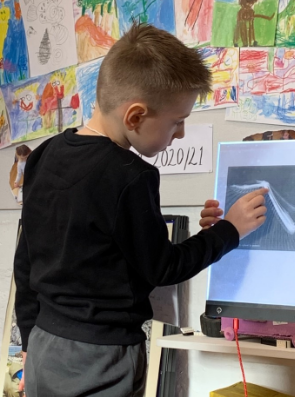
This prompted us to think about the existing owls at our sanctuary. When we visited Suffolk Owl Sanctuary, we noticed that a lot of the owls had personal profiles written up describing their species, age and other information. We created ‘fact files’ about our current owls, detailing their names, age, length of time in the sanctuary, where they might have been found, favourite food, characteristics and personality. Our visitors will enjoy reading about all the different personalities of the owls at our sanctuary!
We also started to think about different ticket prices to access the sanctuary, and what different coins people could use to pay for these. We put together a price list for children’s ticket, adults’ ticket, young adults, pensioners, and families. Then we investigated different ways we could pay for these with different coins, finding a lot of different possibilities. Later on the week we also created a price list for the items in the café, and compared and ordered the prices from most to least expensive.
W/c 14th February 2022
The week started with a further vets assessment on Bluebells recovery, which would help us to decide whether she is ready to move into a bigger enclosure. We collectively went into role to examine the current condition of Bluebell, and were pleased to see that her wing has made a recovery from the fracture, her beak is repaired and her general behaviour seems much brighter. We individually wrote out our personal thoughts on the best course of action to take, and then took these ideas to a company meeting to make a final decision on what will be best for Bluebell. Out of this, the idea that Bluebell could be placed in the Tawny owl enclosure to socialise came about, and prompted further thought. Some ideas from this included:
“The other owls could take care of Bluebell”
“They could help her to fly”
“But they might not like each other and not get along well”
“We could build her a low-down nest so she feels safer and won’t fall again”
“What about if she slept in her small enclosure in the day and could meet the other owls at night when they are awake”
“What about if we attached the enclosure together?”
After a lot of discussion and debate, the best course of action seems to be slowly introducing Bluebell to the other tawny owls to socialise. We understand that this could be
a bit scary for a little owl like Bluebell, so we need to carefully bring them together and gradually over a period of time. We created our own drawings of how we could connect the two enclosures, and added labels to help explain our vision. All our different ideas were combined to create a system that would mean that Bluebell can slowly and gradually become acquainted with the other owls, whilst still having her own space.
We used our knowledge of fractions, including halves, thirds and quarters, to measure out the right amount of food and medicine to give to Bluebell.
With the plans for Bluebells future at the sanctuary in place, we started to think further about how she would be feeling at this point in time. We used the device of dramatic convention to imagine ourselves both as Bluebell and the other Tawny owls in the enclosure. How would we be feeling in Bluebells position? Scared? Nervous? Excited? How about the other owls – would they be welcoming? How could they make her feel welcomed and safe? Looking at this from both points of views helped us to create a journal entry from the point of view of Bluebell. We wrote about her current feelings whilst she is in her smaller enclosure on her own, her recovery, and her hopes for the future moving into a larger enclosure and hopefully making new friends.
W/c 28th February 2022
Whilst dividing and sharing out food for the owls, a mysterious discovery has been made. Bluebell has been settling comfortably into her new home, but we have found some bizarre objects in and around the enclosure that have left us feeling rather confused. There was a bandage, a stethoscope and a small glass candle lamp. After speaking to all staff at the sanctuary and no-one knowing where these have come from, we collected the evidence together and in a team meeting and tried to piece together the discoveries. The objects led us to think that someone had been coming into the sanctuary as a vet or a nurse, and accidentally left some items there.
Worrying that our sanctuary was in danger if people were sneaking in after closing time, we increased the security and added more CCTV cameras around the sanctuary. This proved to be very helpful, as the next day when we came in, we found that the CCTV had picked up activity from 11:27 pm the previous night. It showed a lady creeping in, kneeling down and softly speaking to Bluebell and her friends. Although the CCTV audio was quiet, we could hear her saying ‘hello old friends’ to the owls and that she missed them and was so happy to see them. She had the stethoscope around her neck, and a white hat with a red cross on the front. The footage was rewound and shown a few times so that we could really assess the situation and look at her behaviour.
With so many questions around this, we wrote down our thoughts and what we wanted to find out, and left them by the enclosure with her lamp, hoping that we could summon her back and speak to her. She returned briefly, and seemed very hesitant to share information with us. She did tell us that she was ‘not from this time, but from the past’ and said that she was a nurse and liked caring for people.
We created a silhouette drawing of the person so that we could see a better idea of who she is and what other questions we may have. Whilst using black paper and a light to do this, we made a few observations about how light and shadow works:
“Things in the way of the sun make a shadow”
“Light can only go through things that are see-through”
“Glass is made from sand”
“Transparent means see-through”
“The shadow gets bigger when moving towards the light”
“If you go closer to the light, it means the light is more powerful so makes the shadow bigger”
“Your shadow is always with you, even if you can’t see it”
W/c 7th March 2022
We have had an intriguing start to the week, with the discovery of an old coin found inside Bluebell’s enclosure. After closer inspection, it was understood that this was in fact a coin with Queen Victoria’s face on, from the Victorian era in the past. With this in mind, our team gathered resources and started to find out about the Victorians.
This prompted us to think about what ‘the past’ actually means. Here are some statements with our views on this:
“If we can find out her king or queen, we can find where she has come from”
“Two weeks ago, I drew a picture – that is now in the past”
“Past and future are opposite. The past is time that has already happened and the future is time that is going to happen”
“ ‘Water under the bridge’ means something that has already happened”
We then created a timeline to work out how long ago the Victorians lived, and marked this out as 1cm = 1 year. We marked this back to the year 1800, and filled in specific notable events from this time, up until present day. We made sure to include the important milestones in our Owl Sanctuary here as well!
Finally, we were able to make contact with the unknown lady once again, and she confirmed to us that she is in fact from ‘another time’ and does not exist in the present day. She seemed unsure if she could trust us at this point, so we need to work on gaining her trust in order to find out more and even help her.
W/c 14th March 2022
Once again, another item had been left in our sanctuary, this time in another place. At first, we thought it was just a piece of rubbish – a small, scrunched up piece of brown paper.
After smoothing this out, we were intrigued to find an old letter dated from 18th February 1855. The letter read:
“What do I do? I feel so torn between my head and my heart. I know that it is my calling, but I cannot help how I feel. I just don’t know what to do.
We tried to think about what this person might be talking about and who they actually are. During our research into the Victorians, our thoughts turned to a notable figure in Victorian nursing and if there was a connection here. We found out that Florence Nightingale was a nurse during the Crimean war and helped to increase the hygiene in many hospitals, helping the soldiers to recover. Could this be the mysterious visitor? What is she referring to when she says that she feels torn between her head and her heart? We wonder if she might be worried about leaving the sanctuary to help the soldiers, or if she is already in the Crimea and doesn’t want to come home.
After writing notes to ‘F’ to put back into the sanctuary in the hope that we could gain her trust, we were finally able to make contact with her once again and this time with more information given to us.
The lady confirmed that she is in fact Florence Nightingale, and she is from the Victorian era. She has come back to visit our sanctuary as during her travels as a nurse, she once rescued a small owlet from a group of children who were not treating her very well. Florence looked after this owlet, and called her Athene. She carried Athene around in her pocket during her travels and made sure she was well looked after and cared for. Our owl sanctuary reminded her of her beloved pet owl, and she has been visiting since to see the owls that we look after.
After seeing how much we can care for and nurse our owls, Florence has asked us if we could help her and join her team of nurses to look after the soldiers in the Crimean War. We have accepted, and now will need to work on how we can best take care of the sick and injured soldiers.
W/c 21st March
Knowing now that we need to help Florence nightingale help to care for the sick an injured soldiers in the Crimean war, we turned our thoughts to what the soldiers might have been like during that time and find out what life was like back then. Our timeline that we had created before helped us to envisage how long ago the Victorians lived and what has happened since then. We also used this to look at addition and taking away, using the timeline as a number line and counting the years since certain events.
We studied skeletons of the human body in order to understand our soldiers’ injuries better, and found out what our bodies need to stay active and healthy. We are making sure that we are feeding the soldiers lots of vegetables and fruit, and encouraging them to exercise after their recovery to maintain good health.
One thing that really stood out for us was finding out how poor the hygiene in the hospitals were at that time. They were often very badly run and dirty. Soldiers were being admitted to hospitals for injured but then getting more ill and dying from infections caught from the germ-ridden environment. Hospitals also tended to have a lack of beds, bandages and bathing facilities, which all contributed to soldiers getting more and more sick. Through the use of dramatic convention, we learned of Florence’s disgust at this and her determination to make things better. We will continue to work with Florence to help things improve.
W/c 4th April 2022
Florence received a letter from her parents showing dissatisfaction with her choice to help soldiers in the war. We saw a clip of Florence opening up the letter whilst travelling, and looking frustrated and sad at what the letter read. Before finding out who had written to her and what was said, most of our guesses were with assuming her parents were not happy with her life choices. We thought this drawing on our knowledge of the expectations of people in the Victorian era –
“Women weren’t expected to work back in those days”
“Most women had to get married and have a family”
“Maybe her parents are worried about her traveling and want her to be home and safe”
After confirming that this letter did detail his, we discussed the changes in expectations from then and present day. Our feelings towards the situation were to support Florence and encourage her following her own calling, since we know that this is something she feels that God has wanted her to do and she feels in her heart it is the right choice.
The use of dramatic convention helped us to envisage what we would reply to her parents’ letter. We took turns at practising in role as Florence whilst the teacher was in role as her mum, and explained why we felt it was so important to us to keep nursing. We wanted to be respectful and kind as possible, but had to stand up for what we believe in!
After this, we were able to write letters as Florence back to her parents, detailing our feelings towards their letter and why we still feel that we need to keep on nursing. We studied how to write a letter back, what to include, and what the tone should be if the letter is being sent to her parents.
Feeling pleased that we have helped Florence and supported her work and knowing that we must say goodbye to her and the soldier as the term draws to an end, we decided to write out a list of instructions to the other nurses on how to best care for the soldiers and keep the hospital clean and hygienic.
To conclude, we used world maps to mark out where Florence had travelled and each created a key of her travels showing all the different countries. What a great end to our work with Florence and the Victorian era.
